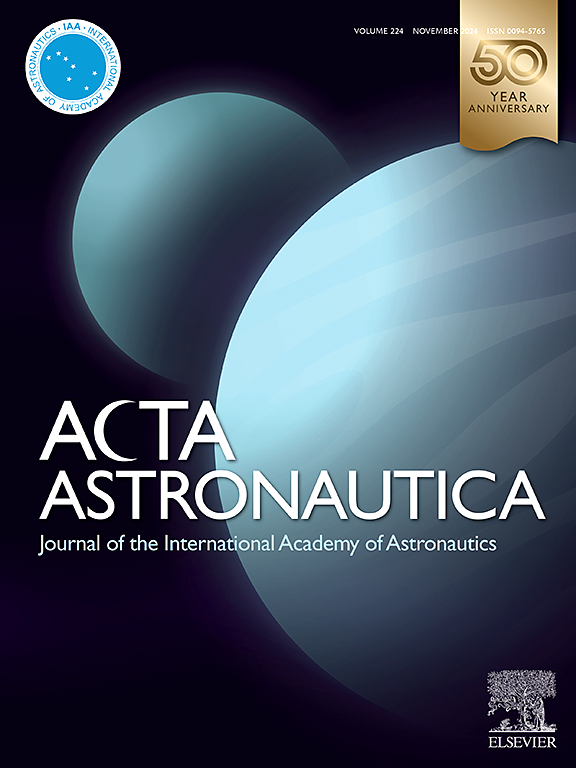Feasibility study and prospects analysis of lunar regolith forming based on concentrated solar energy
IF 3.1
2区 物理与天体物理
Q1 ENGINEERING, AEROSPACE
引用次数: 0
Abstract
The solidification and molding of lunar regolith are essential for constructing lunar habitats. This study introduces an innovative lunar regolith molding technique that synergistically combines solar concentration, flexible optical fiber bundle energy transfer, and powder bed fusion. A functional prototype is developed to validate the proposed scheme. Systematic experiments including fixed beam spot melting, line melting, surface melting, and body melting are conducted using simulated basalt lunar regolith. Through in-situ observation of the melt pool's formation, evolution, and expansion dynamics, we identify a sequential transformation mechanism on the powder bed's surface: initial curling evolves into detachment from the bed, subsequent incorporation into a molten droplet, and ultimate solidification. A comprehensive evaluation of density and mechanical properties across multiple parameter combinations reveals that energy flux density of 3.33 MW/m2 with a scan speed of 30 mm/min, inter-track spacing of 3 mm, and layer thickness of 2 mm enables the production of structurally integral samples with continuous morphology. The resulting specimens demonstrate a maximum compressive strength of 4.25 MPa and a density of 2.31 g/cm3. This solar-powered additive manufacturing approach establishes a viable reference framework for large-scale on-site construction of lunar research stations.
利用聚光太阳能形成月球风化层的可行性研究及前景分析
月球风化层的固化和成型对月球人居环境的建设至关重要。本研究介绍了一种创新的月球风化层成型技术,该技术将太阳能聚光、柔性光纤束能量传递和粉末床融合协同结合。开发了一个功能原型来验证所提出的方案。利用模拟玄武岩月球风化层进行了固定束点熔化、线熔化、表面熔化和体熔化等系统实验。通过现场观察熔池的形成、演化和扩展动力学,我们确定了粉末床表面的顺序转变机制:最初的卷曲演变为脱离床,随后融入熔滴,最终凝固。通过对多参数组合的密度和力学性能进行综合评估表明,能量通量密度为3.33 MW/m2,扫描速度为30 mm/min,轨间间距为3 mm,层厚为2 mm,可以生产出具有连续形貌的结构完整样品。结果表明,试样的最大抗压强度为4.25 MPa,密度为2.31 g/cm3。这种太阳能增材制造方法为月球研究站的大规模现场建设建立了可行的参考框架。
本文章由计算机程序翻译,如有差异,请以英文原文为准。
求助全文
约1分钟内获得全文
求助全文
来源期刊

Acta Astronautica
工程技术-工程:宇航
CiteScore
7.20
自引率
22.90%
发文量
599
审稿时长
53 days
期刊介绍:
Acta Astronautica is sponsored by the International Academy of Astronautics. Content is based on original contributions in all fields of basic, engineering, life and social space sciences and of space technology related to:
The peaceful scientific exploration of space,
Its exploitation for human welfare and progress,
Conception, design, development and operation of space-borne and Earth-based systems,
In addition to regular issues, the journal publishes selected proceedings of the annual International Astronautical Congress (IAC), transactions of the IAA and special issues on topics of current interest, such as microgravity, space station technology, geostationary orbits, and space economics. Other subject areas include satellite technology, space transportation and communications, space energy, power and propulsion, astrodynamics, extraterrestrial intelligence and Earth observations.
 求助内容:
求助内容: 应助结果提醒方式:
应助结果提醒方式:


